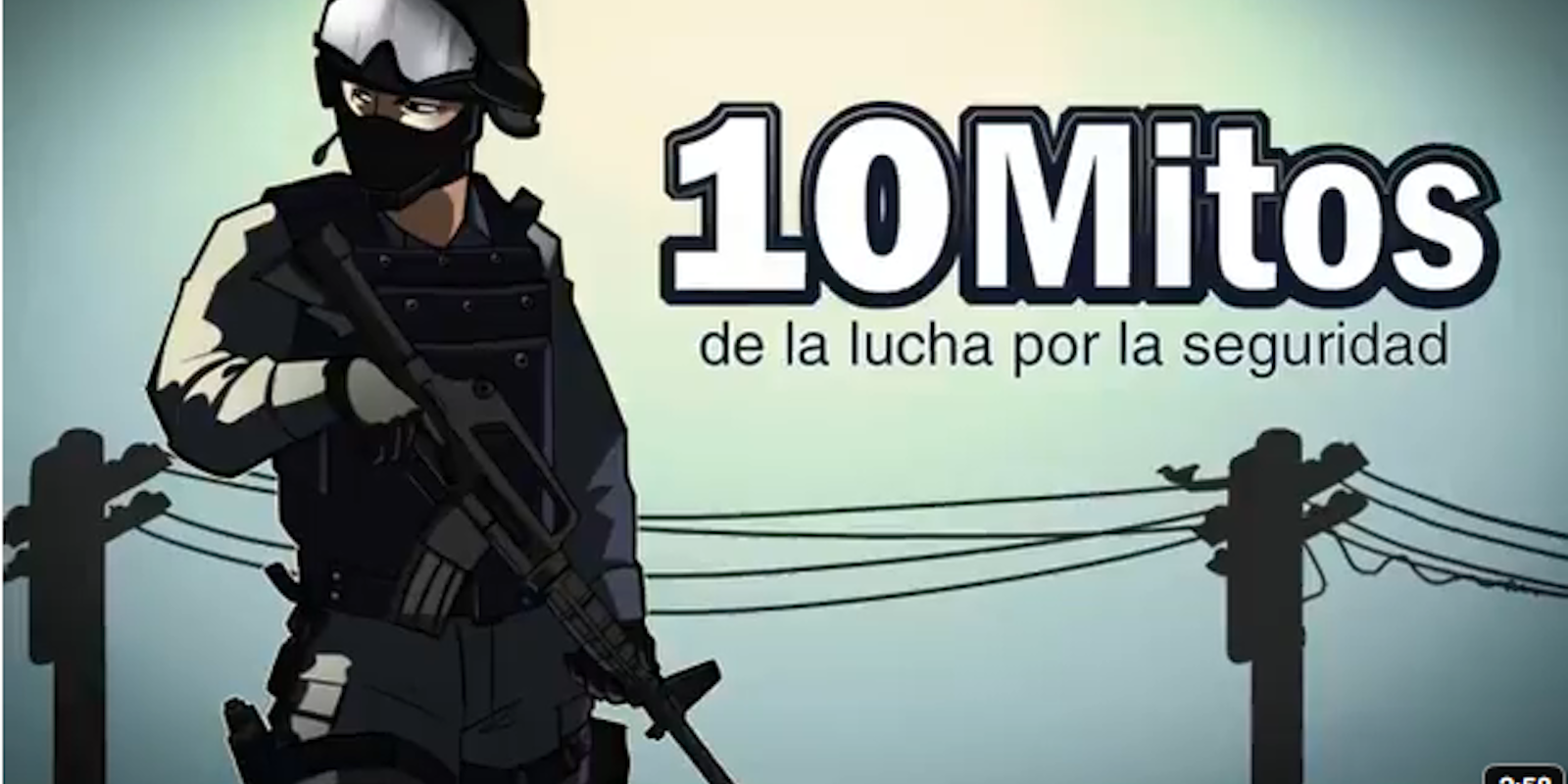A YouTube-based effort to improve the public perception of the Mexican Government’s response to the country’s drug war seems to have fallen flat.
Nearly six months after the government produced and launched a series of videos called “10 Myths,” most of the videos have fewer than 10,000 views on YouTube. The videos present a series of comic book-like drawings set to somber, electronic music and try to dispel myths like “the federal government has no strategy in its fight for internal security” and “the government should negotiate with criminals to end the violence.”
“We give a coherent and comprehensive view of what is happening,” Mexican National Security spokesman Alejandro Poire told the BBC when the last of the videos was launched in August.
Links to all of the videos were included in an article on the Mexican news site Sopitas.
Here are the first and second videos:
But it’s not clear how well the effort is working. There were just three comments on an International Business Times article about the launch of the program in May, and those were negative.
Meanwhile, a group of 84 NGO’s released a report last month criticizing the Mexican government’s response to the drug war, which has left 40,000 people dead in the past five years. About a quarter of Mexico’s standing military is engaged in fighting drug cartels. Yet police corruption and ties to the drug cartels often taints the public’s perception of government efforts.
The report mentioned the videos specifically as a waste of resources.
It is “time for the government to stop wasting resources on campaign videos to convince us that his failed strategy is on track. You should better direct those resources to actions aimed at generating sustainable gains in public safety of the population,” the report said.
The Sopitas article drew several comments from readers, one of whom called the Mexican government “the cartoon government” and others who saw the videos as a distraction.
The drawings “are only good for people who believe (Felipe) Calderon is a good president,” one of the posters wrote in Spanish.


